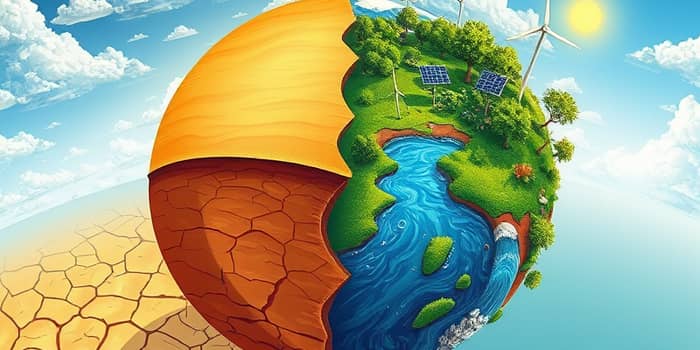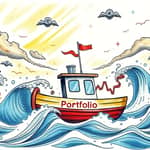
Our modern world has thrived on an economic model built on unending growth and resource exploitation. Yet recent global shocks have exposed the fragility of that paradigm. As populations surge and environmental limits tighten, our challenge is to chart a course from looming scarcity toward genuine abundance.
Since the Industrial Revolution, continuous high growth seemed inevitable. Factories churned out goods, international trade flourished, and capital flowed freely across borders. Per capita consumption of mass resources leapt by 78.7% between 1900 and 2002, while material use soared twelvefold from 1900 to 2015. Yet this abundance rested on a delicate foundation.
In the last two decades, waves of disruption—the COVID-19 pandemic, supply chain breakdowns, and energy crises—have laid bare persistent forms of scarcity in labor, capital, and natural resources. These events have catalyzed a global reckoning: growth cannot continue unchecked if planetary boundaries are to be respected.
Water, once taken for granted in many regions, stands at the frontline of scarcity. By 2025, two-thirds of humanity may lack reliable access to fresh water. More than 2 billion people already endure high water stress, with 31 countries using 25%–70% of available supplies and 22 exceeding 70% use. Agriculture alone accounts for 70% of global withdrawals, climbing to 90% in some arid zones.
Beyond water, critical minerals and energy resources face similar pressures. Planetary boundaries for safe emissions and resource extraction have been tested, prompting emerging regulatory frameworks such as carbon pricing and extraction quotas. As raw materials become scarce, the costs of traditional growth models are set to rise sharply.
Throughout history, technology has mitigated scarcities: the Green Revolution lifted global food production; electrification and refrigeration transformed industry; digitization unlocked information abundance. Today, the promise of solar photovoltaics, wind turbines, advanced batteries, and home-scale energy solutions offers hope for breaking our fossil-fuel dependence.
Yet technological abundance cannot fully substitute for finite resources. The manufacture of clean-energy infrastructure demands minerals like lithium and cobalt, which themselves face extraction limits. Moreover, digital transformation relies on energy-intensive data centers. Balancing innovation with resource constraints will require holistic strategies.
Global growth forecasts have moderated: Morgan Stanley projects 2.9% expansion in 2025, down from 3.3% in 2024, with further slowdown in 2026. Inflation pressures persist in some economies, and public deficits are set to rise in major regions, including the US, euro area, and China. Germany’s deficit could hit a 30-year high, reflecting increased social and climate-related spending.
Meanwhile, global population is on track to add 1.2 billion people by 2025. Without adjusted economic models, we risk deepening inequalities: youth unemployment surges in regions like Afghanistan and Nigeria, while water and food security remain uneven across continents.
Moving from scarcity to abundance demands integrated approaches. No single technology or policy will suffice. Instead, societies must:
Innovations in distributed energy generation—microgrids, rooftop solar, and community wind projects—can empower local resilience. Meanwhile, advances in synthetic biology and precision agriculture may boost yields with minimal water and land use.
Equitable access to resources is as crucial as technological progress. Wealthier nations can support vulnerable regions through financing for sustainable infrastructure and capacity building. At the same time, trade policies should encourage the flow of clean technologies and essential goods without compromising local self-sufficiency.
To prevent instability driven by youth unemployment and resource conflicts, governments and businesses must prioritize inclusive employment opportunities and invest in education and training that align with a green economy. Such measures can transform demographic challenges into engines of innovation and growth.
Our journey from resource abundance to scarcity—and potentially back again—hinges on redefining prosperity. Rather than measuring success solely by GDP growth, we must integrate metrics for ecological health, social well-being, and intergenerational equity. Policymakers, entrepreneurs, and communities must collaborate to create new types of abundance that transcend raw material expansion.
In this emerging paradigm, value derives not from extraction but from stewardship, repair, and shared innovation. Circular supply chains, regenerative agriculture, and urban designs that recycle water and energy epitomize this shift. By embracing systems thinking and long-term planning, we can unlock potential that outlasts finite resources.
We stand at a crossroads. The legacy of the Industrial Revolution brought unmatched abundance but also profound ecological strain. Today’s disruptions signal an urgent need to evolve our economic frameworks and harness technology responsibly.
Through concerted efforts—optimizing resource use, fostering breakthrough innovations, and ensuring inclusive growth—we can transcend the limits of scarcity. By reimagining value and aligning human aspiration with planetary boundaries, we have the opportunity to usher in an era of sustainable abundance that benefits all life on Earth.
References













